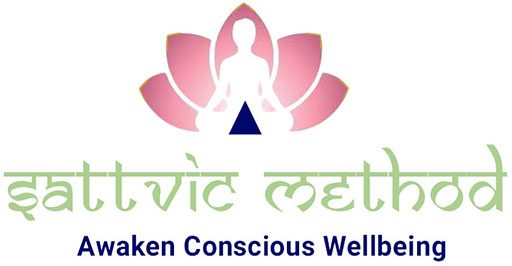How to Build Confidence as a Young Woman Leader
Rooted in Sattvic Consciousness, Dharma, and Sacred Self-Empowerment
Introduction
Leadership under the outer trappings of “position” or “title” begins with what’s within: clarity, courage, and confidence. For young women—whether navigating a corporate sphere, leading within the home, caring for others, or balancing multiple roles—confidence is not optional; it is foundational to manifesting dharmic leadership.
In Hindu dharma, sattva is the quality of purity, harmony, clarity, wisdom. Cultivating sattvic consciousness helps a woman align with her true Self (Ātman), rise beyond fear and conditioning, and lead from inner steadiness. This post offers a roadmap—both spiritual and practical—to build confidence, anchored in dharma and illuminated by modern studies.
Why Confidence Matters—Especially for Young Women Leaders & Caregivers
- Self‐Efficacy Drives Action
Studies in leadership psychology show that self‐efficacy—belief in one’s ability to influence and lead—is strongly linked to taking leadership roles. For young women, especially in fields such as STEM, early interventions increase leadership self‐efficacy, which then correlates with persistence, greater ambition, and career advancement. (Life Sciences Education) - Stereotypes & Implicit Bias Reduce Confidence
Many women internalize societal beliefs—explicit or subtle—that “leaders act like men,” or that women need to be perfect before speaking up. These beliefs cause hesitation, self‐doubt, and missed opportunities. Studies have shown that making people aware of stereotype threat, and equipping women to counteract bias, helps reduce its negative impacts. (Life Sciences Education) - Holistic Identity: Roles, Spiritual Self, Caregiving
For many young mothers or caregivers, leadership is not limited to workplaces; it includes the home, community, influencing values. Confidence in balancing these multiple roles with inner peace is essential. Sattvic consciousness helps one see that leadership, service, and motherhood are not separate from spiritual path—they are, properly lived, expressions of dharma. - Inner Strength Supports Resilience
The journey of leadership invariably includes setbacks. From the Bhagavad Gītā’s teaching of Stitha-prajnataḥ (steady wisdom) to the practice of detachment from fruit of action (karma yoga), Hindu dharma offers tools for resilience, equanimity, and trust in Self. Being confident does not mean never being afraid; it means remaining anchored when fear or chaos arises.
Principles from Hindu Dharma That Support Confidence
To build confidence in a sattvic way, here are Dharma-rooted principles to ground in:
-
- Sattva, Rajas, and Tamas (Triguna)
In Samkhya and Yoga philosophy, these three guṇas shape mind and character. Sattva (light, wisdom, purity) is what we aim to increase as a foundation for inner confidence. Rajas (activity, restlessness) and Tamas (inertia, doubt) can block confidence. Practicing clarity, purity (sattvic diet, thoughts, environment), self-study (svādhyāya), and ethical action helps shift the balance toward sattva. (Wikipedia)
- Sattva, Rajas, and Tamas (Triguna)
-
- Jnana (Self-knowledge) &Svādhyāya
Knowing who you are—beyond roles, external expectations—gives confidence rooted in truth. Reflecting on sacred texts: Upaniṣads, Bhagavad Gītā, stories of Goddess (Devi), of great women rishis and leaders (e.g. Vachaknavi, Gargi, Sulabha) shows that dharma has always honored women’s inner knowing. (HinduNet)
- Jnana (Self-knowledge) &Svādhyāya
-
- Detachment from Outcome (Karma Yoga)
Acting from values rather than anxiety about recognition or reward frees energy. Bhagavad Gītā repeatedly teaches non-attachment to the fruits of action. When confidence is not tied entirely to external validation, one can act boldly, fail, learn, and persist.
- Detachment from Outcome (Karma Yoga)
-
- Bhakti (Devotion) &Śakti (Inner Power)
The energy of the feminine, manifest in Shakti, in the power of devotion, of love, is not passive. It is dynamic leadership. When one aligns with one’s devotional energy (whether to one’s ideals, children, Dharma, God), that becomes a reservoir of strength beyond ego-driven confidence.
- Bhakti (Devotion) &Śakti (Inner Power)
-
- Svadharma (Right Duty) & Dharma
Confidence grows when one is aligned with that which one is meant to contribute—one’s dharma. When a young woman leader discerns her dharma (e.g., as teacher, caregiver, innovator, mother), and acts in service of it, that alignment illuminates action. Even when the path is hard, the conviction gives courage.
- Svadharma (Right Duty) & Dharma
Practical Steps & Practices to Cultivate Confidence (for Working Moms, Stay-at-Home Moms & Caregivers)
Here are life-positive, sattvic coaching practices to build confidence. These integrate spiritual habit, self-reflection, learning, and action.
| Practice | Why It Matters | How to Implement |
| Daily Meditation / Dhyāna& Mindfulness | Settles mental chatter, increases awareness of inner being beyond roles. Creates a steady core. | Even 10-15 min/d, focus on breath, or choose a Gītā verse (e.g. “śhrotrādipriyam ca yat / satovānyasyetisaḥ”) or a śloka from Upaniṣad; or practice japa (mantra repetition) like “Om Namah Śivāya” or “Om Shakti Om”. Aim for consistency rather than length. |
| Self-Study (Svādhyāya) | Studying one’s own beliefs, dreams, shadow blocks; reading dharma texts and stories of women sages to see one’s possibilities. | Keep a journal: write about what you fear, what you believe about your worth, what you want. Read about women rishis (Gargi, Maitreyi, Andal, Meera) or current female spiritual leaders. Reflect weekly. |
| Cultivate Inner Dialogue & Affirmations | The ‘inner voice’ often sabotages; turning it into inner champion builds self-esteem. | Notice self-talk: When you think “I can’t”, pause. Replace with “I am capable, I am learning” etc. Perhaps wrap it in dharmic framing: “I act with courage, rooted in Satya (truth)” or with invocation of your inner Shakti. |
| Small Acts of Leadership & Service | Confidence comes from doing. Service (seva) aligns with dharma and gives experiential evidence of capacity. | Lead a small project at work; volunteer; organize something in your community; take charge of something within your family that feels slightly outside ‘comfort zone’. Reflect on successes. |
| Set Achievable Goals & Celebrate Wins | Concrete progress builds momentum. Celebratory recognition reinforces confidence. | Set monthly or weekly goals—personal, leadership, spiritual—break big goals into small steps. Celebrate: write them down, share with friend or mentor. |
| Mentorship & Community Support | External validation, guidance, mirrors are powerful. Being in a community helps see what is possible. | Find mentors, older women leaders, mothers, caregivers, spiritual guides. Join women’s circles; study groups; dharma satsangs. Exchange stories, feedback. |
| Teaching & Embodying: Sharing What You Learn | Leading by example strengthens your identity as leader. Teaching deepens mastery. | Teach your children; teach in community; share insights; when possible lead a workshop or informal class. Embody integrity, humility, and transparency. |
| Balancing Self-Care & Roles | Without tending to physical, emotional, spiritual health, confidence erodes. Mothers & caregivers need self-compassion. | Ensure rest, nutrition, sattvic food, time in nature, silence. Boundaries around work/family/spiritual life. Ask for help when needed. |
To root this in evidence:
-
- Educational Intervention for Women’s Leadership Self-Efficacy: In a study of early‐career women in STEMM fields, a semester-long course designed to increase leadership self-efficacy (through experiential learning, strategy for handling stereotypes, personal mastery) showed significant increases in leadership self-efficacy, personal mastery, self-esteem, and decreases in perceived constraints. (Life Sciences Education)
-
- Leadership Training in Adolescents: A randomized controlled trial among 15-year-olds: a six-month leadership training and service-learning program increased self‐esteem and self‐efficacy especially among young girls, versus a control group. (PubMed)
-
- Confidence Levels Across Age & Gender in Leadership Behavior Data: A large assessment by Zenger Folkman (11,556 respondents globally) found that women report significantly lower confidence than men until about age 50; also identified specific behaviors (“confidence builders”) that correlate with higher evaluations. This suggests that confidence is both malleable and tied to behavior. (Zenger Folkman)
-
- Positive Psychology Interventions: Interventions aimed at self-esteem, self-efficacy, reduction of anxiety (though not always leadership specific) show that structured practices—affirmations, reflection, goal setting, peer support—can move the needle. (MDPI)
Challenges & How to Navigate Them (Especially for Moms & Caregivers)
-
- Time Constraints & Role Overload: Multiple caring responsibilities can leave little space for self-development.
Solution: integrate practices (meditation, reading) into daily rhythm; leverage micro-moments (e.g. while children rest); treat self-care not as luxury but dharma in order to serve well.
- Time Constraints & Role Overload: Multiple caring responsibilities can leave little space for self-development.
-
- Guilt & Self-Judgement: Social expectations can cause guilt for wanting leadership or self-growth alongside caregiving.
Solution: Reflect via dharma: the Gita teaches acting according to one’s nature and duty without self-judgement. Cultivate compassion for yourself; remember that your growth uplifts others.
- Guilt & Self-Judgement: Social expectations can cause guilt for wanting leadership or self-growth alongside caregiving.
-
- Fear of Failure or Criticism: A leader who is visible is more open to judgement.
Solution: Use detachment (karma yoga) to focus on action rather than outcome. See mistakes as feedback. Cultivate courage via small risk-taking. Anchor identity in the Atman rather than ego.
- Fear of Failure or Criticism: A leader who is visible is more open to judgement.
-
- Societal & Institutional Barriers: Gender bias, glass ceilings, implicit expectations.
Solution: Awareness is primary (stereotype threat studies). Advocacy, mentorship, collective work. Use your voice. Seek environments that support your growth.
- Societal & Institutional Barriers: Gender bias, glass ceilings, implicit expectations.
A Sattvic Coaching Template for Building Confidence (Weekly Cycle)
Here’s a template coaches or individuals can use, per week:
| Day | Theme | Practice |
| Monday | Clarify Intention & Dharma | Morning: set intention for leadership; read a Gītā verse; write “My role as leader this week is….” |
| Tuesday | Self-Awareness | Journal: what limiting beliefs surfaced; observe inner dialogue; meditate. |
| Wednesday | Action + Challenge | Take one small leadership action (speak up, lead a meeting / organize something in home). |
| Thursday | Learning / Study | Read about a woman sage or female leader; study one teaching; discuss with someone. |
| Friday | Self-Compassion & Reflection | Review wins; where I faltered; offer forgiveness; rest, rejuvenation. |
| Saturday | Service or Sharing | Serve someone or teach; share what you’ve learned; connect supportively. |
| Sunday | Integration & Renewal | Meditate in nature / Puja; plan for next week; reset sense of purpose; celebrate the journey. |
-
- Vachaknavi& Gargi — Women philosophers whose debate and insight were sought by sages; they carried intellect and confidence balanced with humility. Their presence shows that leadership and wisdom have always had room for women in Sanātana Dharma.
-
- The Great Goddess Traditions (Shakti / Devi) — Durga, Kali, Parvati: symbols of strength, action, compassion. Identification with the feminine divine grounds confidence in something beyond ego, something inexhaustible.
-
- Modern Women Gurus — Female religious influencers (e.g. female Śaṅkarācāryās, or leaders in spiritual communities) reinterpreting leadership in terms of service, holiness, contemplation and compassion. Their lives show that leadership need not be compromised by motherhood or caregiving. (MDPI
Putting It All Together: A Persuasive Case
If you are a working mom, a stay-at-home mom, a caregiver:
-
- Know this: You lead already—at home, at community, in relationships. What we are talking about is expanding, owning, and growing that leadership.
-
- By aligning your leadership journey with sattvic consciousness, you do not trade off spirituality for success; you integrate them. Confidence becomes an inner resource, not a fragile veneer.
-
- Evidence shows that women who build self-efficacy early, who practice reflective, devotional, value-anchored action, are more likely to step into leadership with resilience.
-
- Taking even small steps will ripple: your children, your community, your workplace will see and benefit. Your confidence is not just for you—it supports cultural change.
Conclusion
True confidence for a young woman leader is less about being loud, always having external success, or matching external standards. It is about stepping into the fullness of your being: integrating your roles as caregiver, worker, spiritual seeker; acting in alignment with your dharma; cultivating the purity, clarity, and harmony of sattva; drawing from deep wells of inner power, self-knowledge, and love.
If you begin with daily meditation, self-study, small leadership acts, community, self-compassion—and anchor all in spiritual purpose—confidence becomes not just possible but natural. Let your leadership emerge from the sacred core within you. Aham Brahmāsmi—“I am Brahman,” the One Self. When you know that, nothing external can shake your true confidence.




